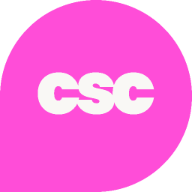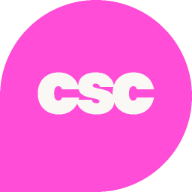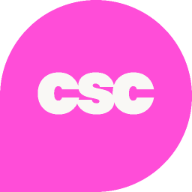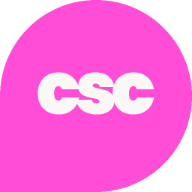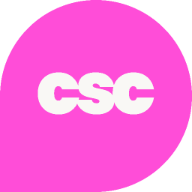Swathes of redundancies, crippling job markets, and slashed budgets rain down on the current working landscape. Everyone’s feeling it, both customers and businesses alike, which makes for a unique situation for customer relationship management positions.
Customer success managers (CSM) find themselves caught in the crossfire of internal and external challenges, circumventing obstacles that too often mirror their clients’ struggles – preventing them from doing their roles.
But what are the most common internal and external challenges or barriers to customer success today? Let’s look into it together and equip you with a strategic roadmap for identifying, preventing, and addressing the critical barriers facing customer success teams.

Internal barriers for customer success teams in 2025
In order to manifest career progression, help shape the future of customer success, and provide customer value, you need first to realize what’s holding you back.
From a management perspective, understanding what’s going wrong for other CS teams is like gold dust – it allows you to make sure your company doesn’t make the same mistakes and re-focus efforts on ensuring CS is as effective and valuable as possible.
In the State of Customer Success 2025, we asked hundreds of customer success professionals what their biggest internal barriers are, and what gets in their way of true customer success. The results were fascinating.
It’s important to mention that this survey was conducted anonymously. We did not request any personal identifiers such as names, email addresses, or company details. Therefore, the insights into company irregularities were captured without fear of reprisal or penalization.
Lack of clarity around role and prioritization
For many CSMs, the role itself remains contested ground. Instead of a clearly defined mandate, many describe a fog of expectations where “everything that isn’t support” defaults to customer success. Without direction from leadership, teams struggle to set priorities, explain their scope, or establish boundaries.
For those who took our survey, this is what they had to say:
- "Lack of clarity around what should be CSMs’ highest priority/role.
- "Understanding the actual scope of success. Sometimes it feels like ‘if it’s not support, it must be success’ is the go-to answer."
- “Explaining my role."
- "Educating people on the scope of CSM & our ownership of all customer touchpoints."
This lack of clarity leaves CSMs vulnerable to role creep – pulled into tasks that dilute their real impact
Poor leadership and organizational understanding of CS
Just like we saw in 2024, leadership missteps compound the problem for CSMs. Our survey respondents pointed to short-term thinking, strategic blind spots, and executives who underestimate the complexity of CS work.
- "Negativity from leadership."
- "Leadership and investors mandating CS decisions without actually understanding a day in the life of CS."
- “Leaders in the organization who don't understand how a SaaS organization is supposed to be run."
- "Poor leadership at the moment – lack of strategy, vision, and ability to effectively execute at the VP level."
When CS is viewed as tactical rather than strategic, its ability to influence company direction is inevitably stunted.
Product issues and misalignment
CS cannot thrive if the product itself is shaky. Many respondents described buggy platforms, slow development cycles, and features that miss the mark for customers. In these cases, success managers are left apologizing for shortcomings rather than enabling value.
- "Our product doesn't work as it should."
- "We haven’t been solving customers’ most common issues. Instead, we’ve been delivering other features and products."
- "Too many bugs, no development."
- "The direction of the product – whether it serves the customer or sales."
Without tighter product-CS alignment, these frustrations become systemic blockers to retention and growth.
Communication silos and cross-functional misalignment
While customer success thrives on collaboration, many respondents described siloed information, poor cross-functional communication, and competing departmental priorities.
- "Siloing of information amongst teams leads to conflicting work."
- "Communication with teams outside of CS, other teams not wanting to communicate."
- “Cross-functional collaboration – competing priorities."
- "Lots of teams working in silos."
Sadly, the result from this often leads to duplication of effort, lost opportunities, and customer experiences that feel fragmented rather than seamless.
Resource constraints
What emerged as a major issue in 2024 continues into 2025: underfunded, understaffed, and under-equipped CS teams remain the norm.
Despite CS being more widely acknowledged as vital to revenue, many teams still operate with minimal headcount, lean budgets, and limited access to the tools they need. Many respondents noted a that this hampers their ability to deliver value to their customers:
- "[My] company does not value [its] customer success team... They cut our pay and positions and then get upset about customers churning."
- "We are small, so severe lack of resources from manpower to systems to hygiene in places like our CRM."
- "Too many internal inefficiencies."
Lack of strategic influence or career path
Career progression remains a sore point. Many CS professionals feel they lack a seat at the strategic table, with limited visibility into decision-making and few opportunities to grow.
There's a definite whiff of frustration aired by our survey respondents at being sidelined:
- “Having a voice in strategic decisions.”
- "Lack of career growth."
- "The perception that a VP of Customer Success is not needed even though I'm responsible for all tasks a VP would be responsible for."
- "Internal inertia."
Beyond these six themes, respondents pointed to broader organizational issues: sales-led cultures that overpromise to customers, legacy structures resistant to change, and outdated mindsets preventing the CS function from evolving.
So, what does this mean for CS professionals today?
In truth, these insights paint a picture of a function still fighting for influence — often without the budget, alignment, or recognition needed to thrive. But our panel of experts offered both realism and hope.
Julien Le Terrien, Chief Customer Officer at Mobilexpense:
"Compared to more established and well-understood roles, CS often struggles to secure the legitimacy it deserves. However, the greater the challenge, the greater the opportunity!
"It’s up to us as CS professionals to clearly define and communicate our roles and impact… Lack of clarity? Bring up your own definition. Limited influence? Show the numbers on how much you helped save, renew, or expand. Once CEOs and CFOs see clear evidence of CS’s direct impact on the bottom line, their attitudes shift significantly."
Chinelo Diejomaoh, Customer Success Manager at HiBob:
"Some organisations are still stuck in the old mindset about customer success. When role definitions aren’t clear, CS gets mistaken for reactive support instead of a crucial strategic function. CS leaders must be part of decision-making and ensure CSMs have the tools, training, and opportunities to collaborate effectively across teams."
Andreja Mrzel, Director, Customer Success (EMEA) at BlackLine:
"I’ve seen all of these barriers firsthand. The mix changes, but they’re ever-present. In today’s economy, we’re seeing decreasing resources and rising targets, which blocks career growth and risks damaging the profession long term. The decline in customer-first culture is already showing the consequences of these internal barriers."
Mark Higginson, Chief Customer Officer at ScreenSteps:
"Resources will always be limited, and CS must evolve with the business. Post-sale is where complexity and ambiguity live — and that’s where CS leaders need to step up.
"The most effective teams don’t wait on the sidelines; they co-create the customer journey, redefine their role, and align with revenue goals. If CS doesn’t lead the post-sale experience, no one will — and the function risks becoming an afterthought rather than a strategic driver."
While these 2025 insights highlight how customer success is still battling for clarity, influence, and resources, it’s equally valuable to look back at the 2024 findings to see which challenges persist — and which ones have evolved over time.
Internal barriers for customer success teams in 2024
Lack of resources and budget
Penny pinching can yield long-term gains, but, in the short term, it can make day-to-day activities pretty challenging. If a fiscally shrewd agenda is a company-wide initiative, that’s one thing; however, if a customer success department is targeted, then this puts a new perspective on the matter.
Startup struggles
For example, if you work in a startup, the goal for that company will be to maximize its existing resources to build a full customer success org. An Implementation Specialist corroborated this, noting that they work for a “‘bootstrapped’ startup with limited resources.”

M&A chaos
Sometimes lack of resources stems not from cost-cutting but through structural changes. Mergers and acquisitions are notoriously tricky beasts, inviting a lot of uncertainty. Another person in our survey, a VP of Customer Success, revealed that their “department was made via an acquisition” therefore, a “CSM layer only exists within my department.”
This VP is now in the tough position of “trying to socialize CSMs across the entire company and expand the role outside the department.” In this situation, there appears to be a lack of leadership consideration for how customer success can operate within the newly merged organization.
Lack of pay progression and high staff turnover
For other customer success professionals, common topics emerge like a lack of pay progression and a high staff turnover, both of which invite employee dissatisfaction. If you're not provided with clear career pathways, you can't envisage your future at a company, and are not supported professionally, it becomes increasingly difficult to maintain motivation and commitment.
The result is a potential exodus of talented professionals who feel undervalued and overlooked, creating a cycle of instability that further undermines the effectiveness of the customer success department.
Without investing in staff development, career progression, and competitive compensation, companies risk losing their most valuable asset: their skilled and dedicated employees who are crucial to maintaining strong customer relationships and driving organizational success.

Communication and alignment
This isn’t an issue unique to customer success, but boy, does it grind our gears nonetheless!
Poor communication and a lack of cross-functional alignment can utterly derail an organization’s effectiveness.
As a Director of Customer Success bluntly stated in our report, there's a "lack of communication and managers who don't understand customer acquisition and success." Without a fundamental understanding of the intricate journey from acquisition to success, there’s going to be an inevitable barrier to strategic alignment.
Too many processes
Having the structure of streamlined processes is a luxury amiss in many startups, but there can be too much of a good thing. An overload of processes can negate the effacity of the process, and be a blocker in and of itself.
"There are too many processes; my company doesn't do a good job of supporting current employees," noted one frustrated CSM. This bureaucratic complexity can stifle productivity and employee engagement.

Leadership problems
Leadership dynamics further complicate the landscape. "The very male-dominated and engineering-led leadership team undervalues customer success and sees it as a cost center," reveals a deeper issue at play: not only are there cultural challenge that marginalizes customer-centric approaches but structural gender inequality.
Perhaps most destabilizing is the lack of strategic consistency. As one professional candidly shared, "We have constantly shifting targets as our CEO's 'vision' changes frequently." Such constant pivoting creates an environment of uncertainty, making it nearly impossible for teams to develop and execute consistent, long-term strategies.
These communication breakdowns are more than mere operational challenges – they represent systemic issues that can critically undermine an organization's ability to deliver exceptional customer experiences.

Breakdown of product relationship
Interdepartmental relationships prove particularly problematic among a minority of customer success professionals.
One CSM lamented their “poor relationship with [their] product team," highlighting the friction that can emerge between customer-facing and product development teams. Such misalignment can lead to disconnected product strategies and unmet customer needs.
Curious to hear it from the horses’ mouths? Here you go. When asked what their biggest internal barriers are, this is how some customer success professionals responded::
- “Slow product developments – and requests being ignored for an alternative agenda.”
- “We have no leverage over the product; we’re being forced to make do with whatever the product team builds, while it should be the other way around.”
- “Poor product stability.”
- “Our product doesn’t build new features quickly enough to justify its price i.e. closing the value gap quickly.”
- “Customer success has no influence on the product roadmap.”
- “We don’t have enough engineers to build the features our customers want.”
- “It's a very product-led company and made up mostly of engineers. I'm piloting the entire customer success function alone.”
We put this dissonance to two acclaimed customer success leaders, to understand their take on it, and to provide their experience of product-customer-success collaboration.
Jess Galenski, Director of Customer Success at Apryse:
“There needs to be an open line of communication between the two teams whether that is monthly meetings, system tools for feedback, and cross-collaboration on customer needs.
"The teams should understand each other's goals, CS should understand the roadmap and the product should be just as accessible to customers as CS is. This helps drive the feedback loop and create strong alignment between CS, product, and your customers.”
Mark Higginson, Chief Customer Officer at ScreenSteps:
“Our CS teams have historically worked very well with our product teams. The first thing I do when I start at a new organization is ensure the relationships between CS, product, and sales are strong.
"We focus on bringing value to the product team and developing a clear, mutually agreed-upon feedback loop. Often, this needs to be driven by CS.
“This collaboration ensures that customer feedback is effectively integrated into product development, enhancing the overall customer experience and aligning our efforts with customer needs and expectations.
"Leveraging the data we can glean from our customers, CS can paint a clear picture of what the potential risks and rewards are in future development plans.”

A lack of understanding of customer success
In many organizations, customer success remains a misunderstood and undervalued function. "There's just a general lack of direction and processes at our company," one professional candidly shared, highlighting the organizational underdevelopment that plagues many customer success teams.
Operational challenges run deep. "There's an operations immaturity and lack of change management culture," revealing the systemic barriers preventing effective customer success implementation. Even at more established companies, professionals find themselves constantly "evangelizing customer success to internal sales."
Management misconceptions further complicate the landscape. "Our management doesn't understand what CS is about and sees it as a mere sales function," which illustrates the reductive view that undermines the strategic importance of customer success.
This misalignment becomes most apparent in performance measurement, as one Manager of Customer Success noted:
"While the C-suite recognizes the value of CS, they measure our success through sales metrics, which conflicts with our primary goal of retention."
As we kept digging into our research, we discovered that interdepartmental friction emerged as a critical challenge.
Another Manager of Customer Success admitted that the real blockage to their customer success function is “there isn't enough genuine partnership with sales and product teams." The result is a suffocating environment where "there are too many layers of management and not enough respect and autonomy."
There’s a lot of truth in fearing the data side of customer success taking over the human aspect. We need both to bring true success. One Senior CSM remarked that their "goals of meeting metrics are prioritized over the quality of calls and connections," highlighting how quantitative approaches can overshadow the nuanced, relationship-driven nature of customer success.

Sales and marketing misalignment
It’s not just product teams causing issues, tension between customer success and traditional sales approaches is palpable in some organizations. One consultant notes that "There's an excessive focus on sales growth," highlighting the continued prioritization of acquisition over retention.
Marketing dependencies create additional challenges. "We're overly dependent on marketing," and "trying to prove our value and what revenue we produce without directly being tied to renewals" underscore the ongoing struggle for recognition.
The fundamental disconnect is perhaps best summarized by a stark assessment: "We're sales-driven not customer-driven." This mindset, a rejection of customer-centricity, continues to undermine the strategic potential of customer success as a holistic business approach.
External challenges
Where digital marketers grapple with Google Core updates or fluctuating social media algorithms, CSMs are faced with systemic pressures that directly impact their ability to deliver value. Consider a CSM working with B2B clients.
When a CSM experiences internal problems stemming from the current economic landscape – think budget constraints and recruitment freezes – chances are their customers are experiencing near identical pressures. This creates a unique symbiosis of struggle: internal barriers that perfectly reflect external market constraints.
Budget restraints
Global economic trends are creating a domino effect. Clients' businesses are reluctant to spend, struggling with:
- Tight budget allocations
- Limited departmental buy-in
- Escalating ROI expectations
These financial pressures directly impact a CSM's ability to drive upsells, cross-sells, and renewals – for which 49.1% of customer success professions are responsible.
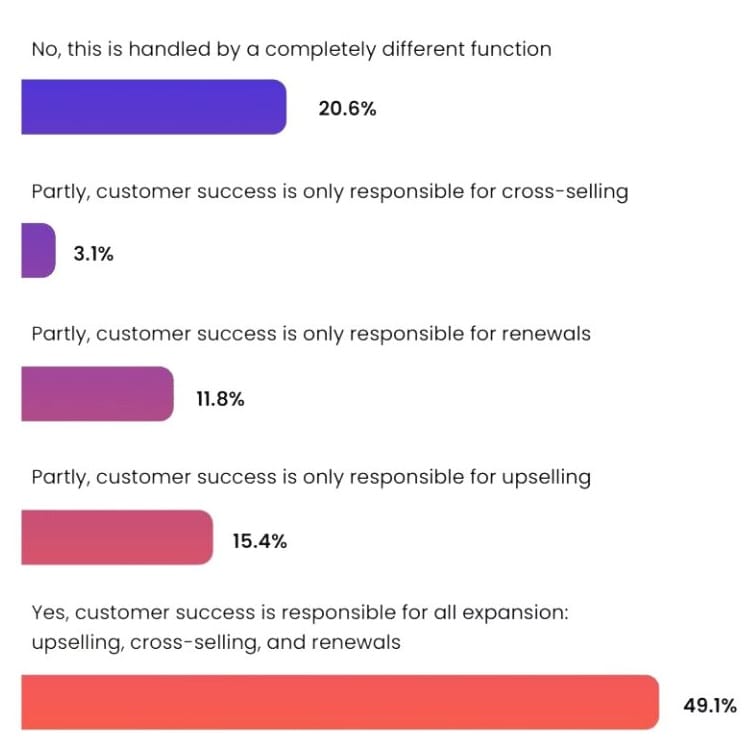
It’s a bitter pill to swallow, but in circumstances where your clients are feeling the pinch, potential expansions become non-starters when your clients are implementing strict spending freezes, dealing with internal cost-cutting mandates, or experiencing significant financial uncertainty
But here’s where the domino effect truly comes into play: compounding these challenges is the issue of organizational instability. High staff turnover among client organizations creates additional friction. When key stakeholders change a CSM’s carefully cultivated relationships get reset to zero. Each new point of contact means:
- Rebuilding trust from scratch
- Re-explaining product value propositions
- Potentially losing institutional knowledge about the client's specific use cases
The result? A CSM's job transforms from relationship management to economic navigation – threading a needle between organizational limitations and client expectations.
These interconnected challenges don't just complicate the CSM's role; they fundamentally reshape the landscape of customer success. Success now requires not just relationship skills, but economic adaptability, strategic thinking, and near-prophetic anticipation of market shifts.
The core insight remains stark: in 2025's economic climate, customer success is as much about survival strategy as it is about delivering value.

Why it’s important to understand what’s impacting customer success in 2025
Recognizing the pitfalls that plague other customer success teams enables a proactive approach, transforming potential missteps into milestones of learning and growth.
Like intrepid adventurers who thrive, not despite, but because of the obstacles they encounter, insightful management can sculpt a customer success environment that is dynamic, resilient, and uniquely tailored to avoid the errors of their predecessors.
On the individual level, grasping at the gnarly roots of these internal barriers becomes a tool for personal evolution. As a customer success professional, you are the conduit between the company's purpose and the customer's needs, and understanding your colleagues' pain points provides a rich context by which to fine-tune your approach.
So, if you find familiar echoes in the struggles shared here, let them be the nudge you need to reassess your goals and recalibrate your compass towards a more fulfilling customer success journey.
If you enjoyed reading this article, you'll love our State of Customer Success report. It's packed full of real-life insights like these challenges, the core responsibilities of CSMs and the KPIs teams are measured on. It's not one to be missed!



 Follow us on LinkedIn
Follow us on LinkedIn